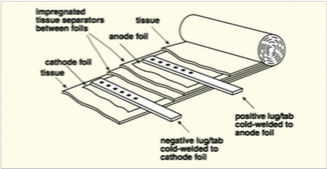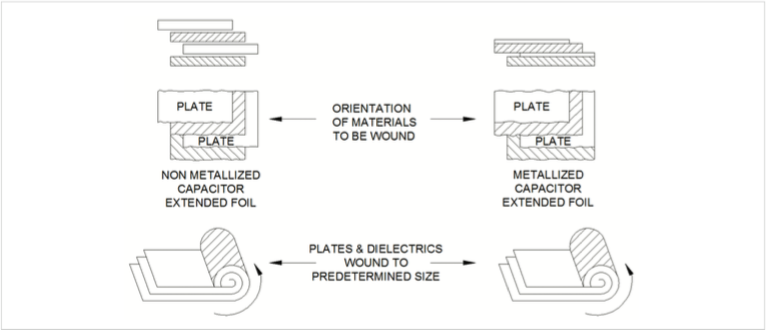

An audio crossover network is a combination of components that separates different parts of the audio spectrum and sends the signals to specific drivers and speakers. The crossover sends the bass audio signals to the woofer, mid-range signals to the standard mid-range speakers, and finally, the high frequency signals to the tweeter. There are a variety of combinations and stages of components to crossover networks.
The entire audio frequency range of approximately 40 Hz to 20 KHz cannot be handled by one driver and speaker. In fact, if the entire spectrum is directed to a single driver and speaker, then output is less optimum and distorted. The speaker drivers are designed for a specific audio frequency range. Operating them outside this range could damage the driver/speaker or cause extreme distortion... not a good thing!
Basically, crossovers are a combination of resistors, inductors and capacitors in a specific array that are frequency specific. A high pass filter blocks all mid- range and low frequencies, passing only the high frequency signals. A low pass filter blocks all high frequency signals and passes only low frequencies. The crossover network is installed between the amplifier and speaker and usually does not require any external power to operate it. The majority of crossover networks are mounted on printed circuit boards. Others are hard-wired one component to the next, tied with a Ty-Rap® cable tie and affixed to the speaker cabinet.
A crossover capacitor is a key component in a speaker crossover network, which also consists of resistors and inductors arranged in a frequency-specific array. The primary role of the crossover capacitor is to allow only high frequencies to pass through to the tweeter speaker, effectively blocking low- and mid-range frequencies that are instead directed to the woofer or midrange speaker. This selective filtering is crucial for maintaining the clarity and quality of the audio output.
Basically, crossovers are a combination of these resistors, inductors, and capacitors in specific arrays that are designed to be frequency-specific. A high pass filter within the crossover blocks all mid-range and low frequencies, allowing only the high-frequency signals to pass through. On the other hand, a low-pass filter blocks all high-frequency signals, passing only the low frequencies. The crossover network is installed between the amplifier and the speaker and usually does not require any external power to operate. The majority of crossover networks are mounted on printed circuit boards, while others are hard-wired from one component to the next, secured with a Ty-Rap® cable tie and affixed to the speaker cabinet.
For the most part, resistors and inductors are of fixed values, and when upgrading, there’s little concern for replacement unless damaged. However, the values should be verified and tested. For new designs, consider non-inductively wound resistors during the selection process. The best inductor to use is a foil-wound type, which will offer a low series resistance as well as superior inductive properties.
Capacitors are the focus of this technical bulletin. There are four basic types of capacitors: electrolytic, ceramic, metallized film and film and foil. Let's explore the distinctive characteristics, advantages, and potential drawbacks of the four primary types of capacitors used in audio crossover networks.
Here is a quick comparison between the primary types of capacitors used in audio crossover networks:
| Capacitor Type | Key Features | Advantages | Disadvantages |
| Electrolytic Capacitors | Polarized, available in wet, gel, or solid polymer formats | Large capacitance, small size, cost-effective | Limited life, high Equivalent Series Resistance (ESR), high leakage current, low insulation resistance, broad tolerances |
| Ceramic Capacitors | Ceramic dielectric, typically use a silver alloy for electrodes | Compact, useful for various capacitance needs | Prone to mechanical vibrations causing microphonics, poor audio frequency response |
| Film and Foil Capacitors | Separate sheets of metal foil and dielectric material | Superior sound reproduction, stable, low Equivalent Series Resistance (ESR) | Generally larger compared to other types, particularly metallized film |
| Metallized Film Capacitors | Thin metal layer vapor-deposited on dielectric material | Reduces physical size, good stability | Higher series resistance compared to film and foil, which can impact sound clarity |
An electrolytic capacitor is polarized – with a positive and negative terminal similar to a battery – and is filled either with a wet liquid, gel chemical or a solid polymer electrolyte, which gives the characteristic of achieving extremely large capacitance values. Advantages of using electrolytic capacitors include a large capacity in a small package size and a relatively low cost. The major drawbacks include: a limited life, an extremely large Equivalent Series Resistance (ESR), high leakage current, low insulation resistance, and broad tolerances.
There are two styles of wet electrolytic capacitors, etched foil and plain foil. The etched foil style differs from the plain foil in that the aluminum oxide is etched to increase the surface area resulting in a smaller size. This type of capacitor can have extremely large values. However, the disadvantage is a low current capability [see Figure 1: Etched Style Aluminum Electrolytic Capacitor]. Plain foil style has two plates that are anodized, which sets up the polarity of the plates.



Temperature range is a major consideration when choosing an electrolytic capacitor. Even though the capacitor is operated at room temperature with the voltages and high frequencies present, the device will increase in temperature rapidly. Choose electrolytic capacitors with high ripple and pulse current ratings. Electrocube has electrolytic capacitors specifically designed for audio applications. Bypass capacitors, such as the Electrocube 967D series, can be used to improve the performance of electrolytics by lowering the Equivalent Series Inductance (ESL).
Non-polar electrolytic capacitors include two polarized capacitors of the same value placed in series with the positive terminals or negative terminals connected together. The resulting single capacitor is a non-polar capacitor equal to half the capacitance of the original capacitors [see Figure 4: Non-Polar Electrolytic Equivalent Design]. The two capacitors rectify the applied voltage and act as if they are partially bypassed by a diode.
The performance of a standard non-polar aluminum electrolytic capacitor creates distortion when it is used in audio AC applications. Off-the-shelf, single non-polar design capacitors have an extremely high Dissipation Factor (DF) ranging from 2% to 150%. This extreme DF results in excessive heating and a shortened life in audio applications. A high quality, non-polarized electrolytic capacitor, when coupled with the 967D series, produces clean, undistorted sound.

The dielectric of a typical ceramic capacitor is a ceramic material and the electrodes are a silver alloy [see Figure 5: Basic Ceramic Capacitor Construction]. The capacitor is stacked alternating ceramic with silver electrodes in a number of layers until the nominal capacitance is achieved [see Figure 6: Internal Ceramic Capacitor]. There are two major drawbacks using ceramic capacitors. First, they tend to pick up mechanical vibrations like a microphone, turning them into unwanted electrical signals. These vibrations cause a squeezing or oscillation of the ceramic dielectric that produces a small voltage in the capacitor. This small voltage (in microvolts) can cause audio distortion, called microphonics. The second problem with ceramic capacitors is poor audio frequency response. Ceramic capacitors have a poor series resistance ESR and a low Insulation Resistance (IR), which impose additional resistance to the tuned circuit, resulting in poor audio response.


There are two types of film capacitors, film and foil, as well as metallized film capacitors.
Electrodes in film and foil capacitors are separate sheets of metal foil wound with sheets of dielectric material [see Figure 7: Capacitor Construction]. These electrode sheets (or foils) extend alternately out of each end of the capacitor roll beyond the dielectric, which provide a large mass of metal material to which the leads are attached. Film and foil designs make the best choice for audio sound reproduction [see Figure 8: Film and Foil Capacitors].
Metallized film capacitors greatly reduce the physical size of the capacitor. Discrete foil sheets are replaced with the thin layer of 99% pure aluminum or other metals that are vapor-deposited directly upon the dielectric material. Since the dielectric material is present at each end of the capacitor along with the metal electrode material, direct attachment of the leads are not possible [see Figure 9: Metallized Capacitors].
The end-terminations of metallized film capacitors are created by the application of a fine, molten-metal spray. The spray makes contact with the layers of metal electrode resulting in plate contact. As the metal spray particles stack up against the aluminum electrodes, there is a compression bond resulting in a resistance higher than the discrete metal foils. The leads are attached to this metal spray, which adds additional resistance. This means there is a complex filter robbing the true, clear sound reproduction.



Film capacitor selection is extremely important to achieve an acceptable quality sound reproduction. Consider the Root Mean Square (RMS) AC rating of the speaker system when selecting the appropriate capacitor since over voltage of a capacitor can result in the premature failure of the component. Additional parameters are the ESR and Dielectric Absorption (DA) of the film capacitors. These values must be as low as possible to avoid distortion.
A typical speaker crossover network is populated with a combination of electrolytic and film capacitors [see Figure 10: Typical Speaker Crossover Network].
The board has installed the Electrocube 967D series polypropylene and foil capacitors. Electrocube does not recommend a metallized capacitor for this type of application. The 967D series is designed specifically for audio applications, providing important characteristics of low ESR, low DA, high insulation resistance, and wide temperature range. A high quality, non-polarized electrolytic capacitor, when paralleled with the 967D series, results in the production of quality, premium sound.
Capacitor manufacturers utilize various combinations of dielectric materials and impregnation oils in the construction of each type of capacitor to achieve specific tone quality. Partner directly with the manufacturer to achieve the desired tone quality. Electrocube has a wide variety of film and electrolytic capacitors designed specifically for audio applications.

Contact Electrocube today to discuss your specific needs.
Contact us »